The mustard plant, scientifically known as Brassica juncea, is a versatile and ancient crop that has played a significant role in human history for thousands of years.
It belongs to the Brassicaceae family, which includes other well-known vegetables like broccoli, cabbage, and kale. Mustard is not just a condiment but also a nutritious vegetable with a rich history, diverse cultivation methods, and a wide range of culinary uses.
This comprehensive guide will delve deep into the mustard plant’s history, cultivation practices, and culinary significance, exploring its journey from the fields to our tables.
Historical Significance
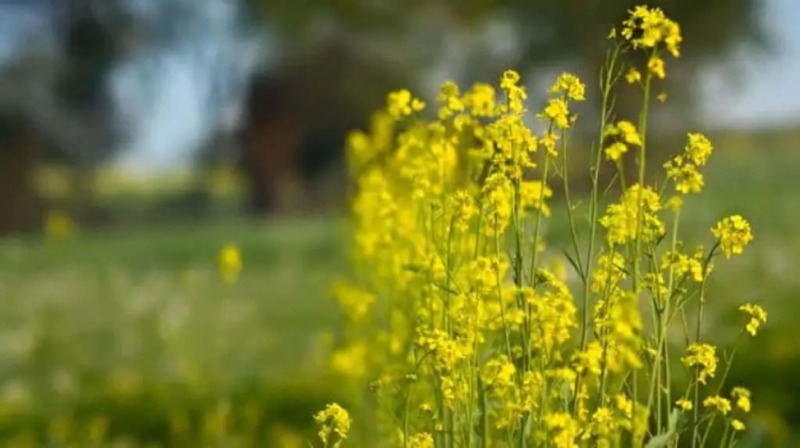
Early Domestication
The history of the mustard plant dates back thousands of years to ancient civilizations. It is believed to have originated in the Himalayan region and was cultivated by civilizations such as the Egyptians, Greeks, and Romans. Archaeological evidence suggests that mustard seeds were used by the Egyptians as early as 1800 BC.
Medicinal and Culinary Uses
In ancient times, mustard was primarily valued for its medicinal properties. It was used to treat a variety of ailments, including respiratory issues, digestive problems, and even as a poultice for alleviating muscle pain. Over time, it transitioned from a medicinal herb to a popular culinary ingredient.
Cultural and Religious Importance
Mustard seeds have held cultural and religious significance in various societies. In Christianity, for instance, Jesus used the metaphor of a mustard seed in the Bible to illustrate the concept of faith. Mustard seeds have also been used in Hindu rituals, symbolizing purity and auspiciousness. This multifaceted plant has woven itself into the tapestry of human culture and tradition.
Have a look at bhringraj plant.
Varieties of Mustard Plants
There are several varieties of mustard plants, each with its own unique characteristics and uses. The three primary types are:
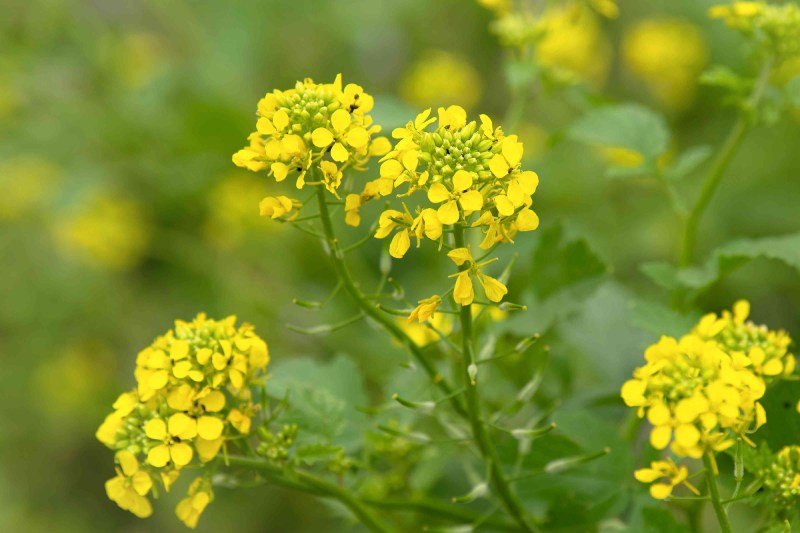
Yellow Mustard (Brassica alba)
Yellow mustard, often referred to as white mustard, is known for its mild flavor. It produces bright yellow seeds, which are ground to make the popular yellow mustard condiment. This variety is commonly grown in North America and is a staple on hot dogs and hamburgers.
Brown Mustard (Brassica juncea)
Brown mustard is the most widely cultivated mustard variety worldwide. It is characterized by its pungent flavor and brown seeds. These seeds are the main ingredient in Dijon mustard, a popular condiment in French cuisine. Brown mustard is also used to make spicy brown mustard and various other mustard blends.
Black Mustard (Brassica nigra)
Black mustard is known for its dark brown to black seeds, which have a strong, pungent flavor. This variety is commonly used in Indian cuisine, where it is known as “rai” or “sarson.” Black mustard seeds are often used in pickles, curry dishes, and various spice blends.
Get information about – Ajwain plant
Cultivation
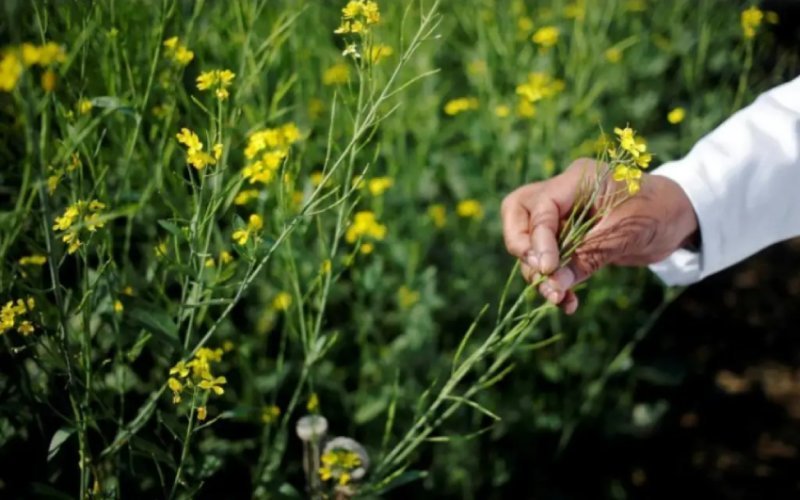
Growing Conditions
Mustard plants are hardy and can thrive in various climates. They prefer cool weather and grow best in temperatures between 45°F to 75°F (7°C to 24°C). Mustard plants require well-drained soil with adequate moisture and plenty of sunlight. They can be grown in both garden beds and containers.
Planting and Care
Mustard can be grown from seeds, which should be sown directly in the garden or containers. The seeds are planted at a depth of about ¼ to ½ inch (6-12 mm) and spaced approximately 6 inches (15 cm) apart. Mustard plants are relatively low-maintenance and require regular watering to moisten the soil.
Harvesting
Mustard greens can be harvested when they reach a desirable size, typically around 4-6 weeks after planting. The leaves should be picked before they become too mature and develop a bitter taste.
Mustard seeds are harvested once the pods have turned brown and dry. The mature seeds are collected and can be used whole or ground into a spice.
You can also look at crassula plant.
Nutritional Value
Mustard is not only flavorful but also nutritious. Both the seeds and greens offer a range of health benefits:
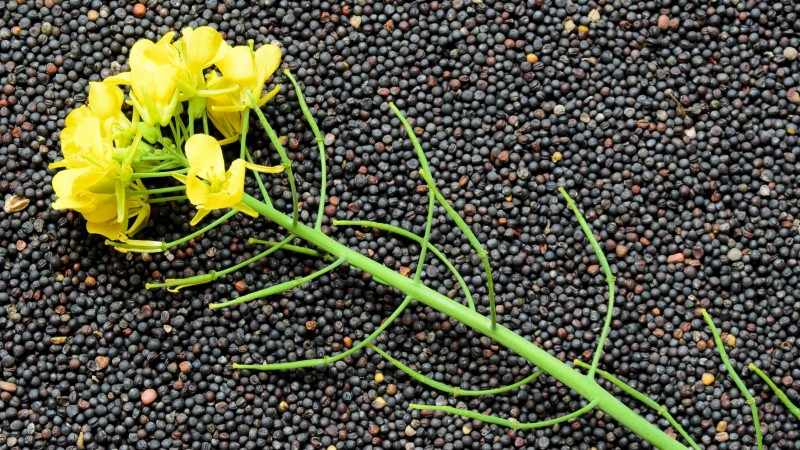
Mustard Seeds
Mustard seeds are a rich source of essential nutrients, including:
- Protein
- Dietary fiber
- Healthy fats
- Vitamins (especially B-complex vitamins)
- Minerals (such as calcium, magnesium, and iron)
Mustard seeds are also known for their high antioxidant content, which can help combat oxidative stress and inflammation in the body.
Mustard Greens
Mustard greens are equally nutritious and are packed with vitamins and minerals, including:
- Vitamin A
- Vitamin K
- Vitamin C
- Folate
- Calcium
- Iron
These leafy greens are low in calories and provide dietary fiber, which supports digestion and overall health.
Also read about – Parijat plant
Culinary Uses
Mustard is an incredibly versatile ingredient in the kitchen, offering a range of culinary possibilities:
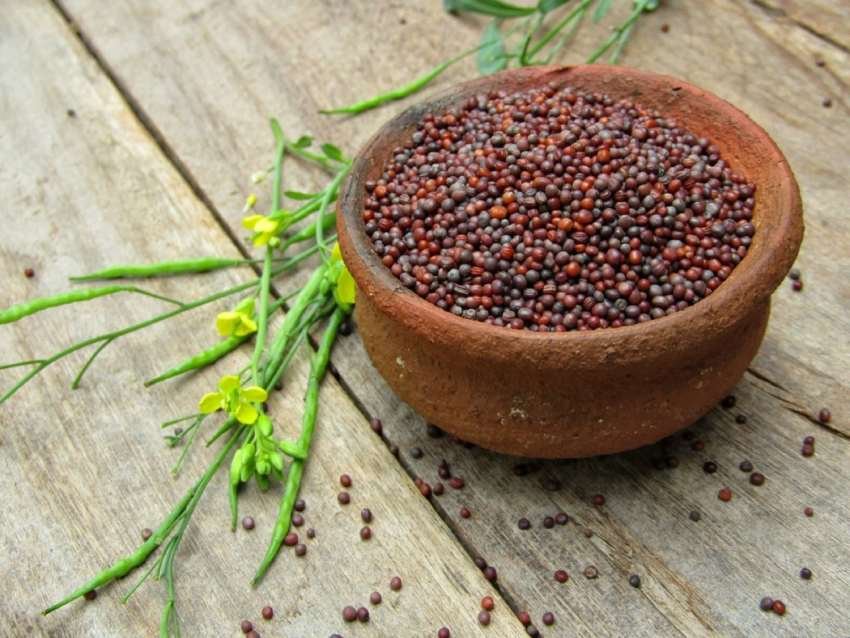
Mustard Condiments
Mustard seeds are the basis for a variety of condiments, including:
- Yellow mustard: A mild and creamy condiment ideal for hot dogs, sandwiches, and burgers.
- Dijon mustard: A smooth and slightly spicy mustard used in salad dressings, marinades, and gourmet sauces.
- Spicy brown mustard: A robust and tangy condiment perfect for deli sandwiches and pretzels.
- Whole-grain mustard: A coarse-textured mustard with visible seeds, adding texture and flavor to dishes.
Mustard Greens in Cooking
Mustard greens can be used in various culinary applications:
- Sautéed Greens: Sauté mustard greens with garlic and olive oil for a nutritious side dish.
- Salads: Add fresh mustard greens to your salads for a peppery kick.
- Stir-Fries: Incorporate chopped mustard greens into stir-fry dishes for added flavor and nutrition.
- Soups and Stews: Mustard greens can be added to soups and stews, contributing both flavor and nutrients.
Regional Mustard Dishes
Different cultures have incorporated mustard into their traditional dishes:
- Indian Cuisine: Indian cuisine features a range of dishes prepared with mustard seeds, including pickles and curries.
- French Cuisine: Dijon mustard is a staple in French cooking, used in sauces like béarnaise and in classic vinaigrettes.
- Southern United States: Mustard-based barbecue sauces are a hallmark of Southern barbecue traditions.
You should also know – Shami tree
Health Benefits
Consuming mustard in various forms can offer several health benefits:
Antioxidant Properties
Mustard seeds are rich in antioxidants, which help protect cells from damage caused by free radicals. These antioxidants may play a role in reducing the risk of chronic diseases and promoting overall health.
Anti-Inflammatory Effects
Mustard seeds contain compounds like isothiocyanates, which have anti-inflammatory properties. Incorporating mustard into your diet may help alleviate symptoms of inflammation-related conditions.
Digestive Aid
Mustard seeds can stimulate digestion and promote healthy bowel movements due to their high fiber content. They may provide relief from constipation and support a healthy gut.
Also consider reading the brahmi plant.
Conclusion
With its rich history, diverse varieties, and culinary versatility, the mustard plant has earned its place as a cherished ingredient in kitchens worldwide.
Whether you enjoy the mildness of yellow mustard on your hot dog or savor the pungency of Dijon mustard in a gourmet sauce, mustard offers a spectrum of flavors to satisfy every palate.
Moreover, mustard greens, with their nutritional richness, provide a healthy addition to a balanced diet. As we continue to explore and appreciate the cultural and culinary significance of the mustard plant, it remains a testament to the enduring relationship between humans and the plants we cultivate for both sustenance and enjoyment.
Consider reading -


